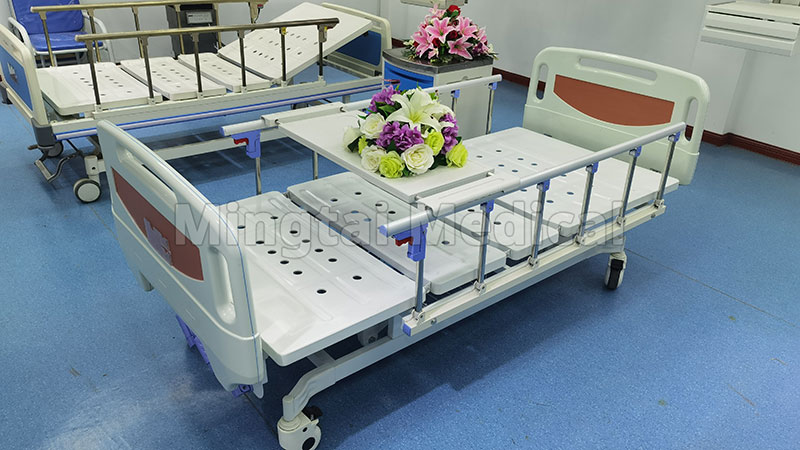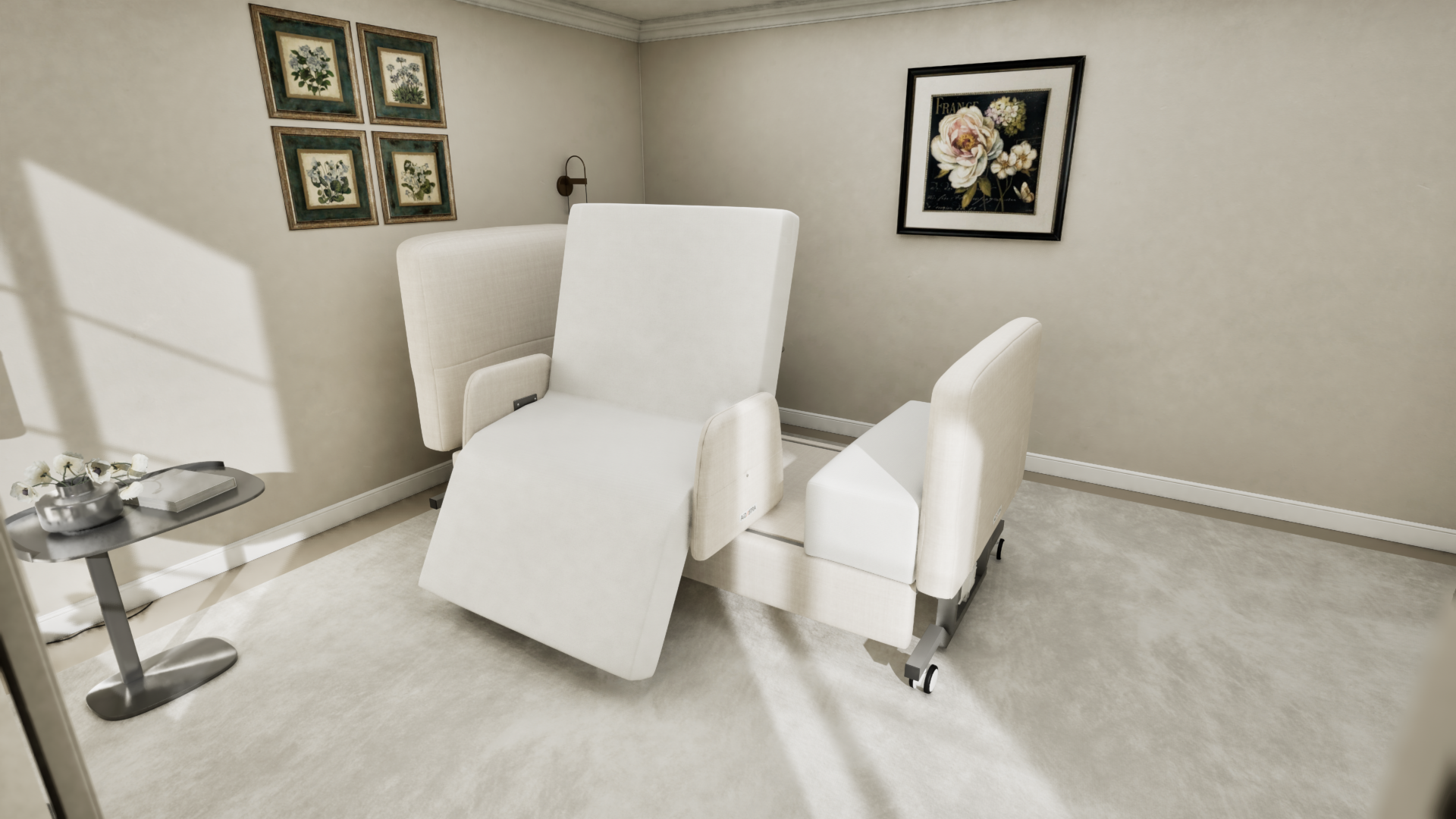Little Known Facts About Hospital Beds For Home Use.
Little Known Facts About Hospital Beds For Home Use.
Blog Article
Hospital Beds For Home Use - Truths
Table of ContentsThe smart Trick of Hospital Beds For Home Use That Nobody is Talking AboutHospital Beds For Home Use Things To Know Before You BuyHospital Beds For Home Use - An OverviewRumored Buzz on Hospital Beds For Home UseThe 20-Second Trick For Hospital Beds For Home UseThe Main Principles Of Hospital Beds For Home Use About Hospital Beds For Home Use
Next, we will explore the characteristics, utilizes, and Pros and Cons of each type of medical facility bed in depth. A hand-operated health center bed is the many basic kind of medical facility bed, and all adjustment features are achieved via a hand-cranked tool.These hand-cranked tools are typically mounted at the foot or side of the bed, and the caretaker or patient can readjust the elevation or tilt angle of the bed by drinking the take care of. Since no electrical parts are called for, are usually less expensive than electrical health center beds, suitable for clinical institutions or families with limited budget plans.
Little Known Facts About Hospital Beds For Home Use.
For people that require to adjust their pose or height frequently, hands-on beds might not be convenient sufficient due to the fact that each change calls for hand-operated operation. If the bed needs to be readjusted regularly, taking care of team might require to spend more physical toughness to operate the hand-cranked device - hospital beds for home use. Guidebook beds are usually suitable for clients in the recovery duration or occasions with reduced nursing requirements
Usually, the adjustment of the back and legs is regulated by electrical motors, while the total height change still needs to be done by hand. The function of this layout is to lower costs and energy consumption while keeping high operational convenience. Compared to manual hospital beds, semi-electric hospital beds are easier in readjusting the back and legs, specifically for clients that require to change their posture often.
Considering that only some functions rely upon electrical power, semi-electric health center beds take in less power during use. Given that the total elevation still needs to be adjusted manually, it might not be as hassle-free as totally electric hospital beds for patients who require to readjust the bed height often. Compared to manual healthcare facility beds, semi-electric healthcare facility beds are slightly more complicated to run, needing customers to understand the mix of electrical and hands-on procedures.
Electric hospital beds have high change accuracy and can be precisely adapted to a specific angle and elevation according to the demands of clients to offer one of the most comfy support. All-electric healthcare facility beds are normally outfitted with a range of additional functions, such as integrated ranges, bed mattress stress modification, and so on, to satisfy the special demands of different patients.
Some Known Factual Statements About Hospital Beds For Home Use
A low bed is a particularly developed healthcare facility bed that can be gotten used to an extremely reduced level, normally only a couple of inches from the ground. The objective of this design is to lower the danger of patients dropping from the bed, specifically for patients that are at threat of falling, such as the elderly or patients with minimal movement.

Facts About Hospital Beds For Home Use Uncovered
supply a treatment environment suitable for kids's height and physique, boosting the convenience and safety and security of youngsters. Some pediatric beds are also outfitted with brightly colored bed rails or cartoon designs to minimize the concern of children in the medical facility setting. For youngsters that require to stay in bed for a long time, pediatric beds are typically furnished with anti-bedsore bed mattress, adjustable bed rails and various other features to provide extensive care support.
The delivery bed is additionally equipped with postpartum recuperation functions, such as cushion adjustment, bed heating, etc, to aid moms recover quicker. The extensive care bed (ICU Bed) is designed for this contact form the critical care unit (ICU) and has thorough tracking and nursing features. This kind of bed is generally equipped with user interfaces for a selection of tracking tools, which can keep an eye on the patient's crucial check in live, such as heart rate, high blood pressure, respiration, and so on.
The Ultimate Guide To Hospital Beds For Home Use
The intensive treatment bed has a completely electric modification feature, which can promptly readjust the angle and position of the bed to satisfy the needs of various therapies and care. The style of ICU bed considers the demand of rescue operation. The bed can be quickly changed to the most appropriate rescue pose and comply with using rescue tools.
It can effectively separate clients from the outdoors world and minimize the threat of infection transmission. Isolation beds are typically furnished with unique bed drapes or sealing covers and connected to air filtration systems to keep the air around the bed clean. Seclusion beds are specifically designed to avoid the spread of pathogens from transmittable patients and safeguard the safety and security of other patients and medical team.
Isolation beds are equipped with air purification systems that can filter microorganisms and particle issue in the air to maintain the air around the bed tidy. Increased and reduced by hand by a crank or a hand-held control. Crank, hand-held control, hands-on laborRaised and decreased making use of an electrical motor. Can likewise be gotten used to various placements.
8 Simple Techniques For Hospital Beds For Home Use
Broader and stronger than a standard bed. Obese, obesity, client sizeDesigned for individuals at risk of dropping out of bed. Reduced to the ground than a typical bed.

In a health care setting, picking the right bed can not just enhance the performance of care, yet also dramatically improve person convenience and safety. By understanding the kinds and uses of these beds, healthcare facilities and family caregivers can better support and look after their patients.
Some Known Incorrect Statements About Hospital Beds For Home Use
HomeCare Medical Facility Beds, a division of DiaMedical U.S.A., is committed to giving full transparency for its consumers. Clients can be bewildered by the different alternatives in long-term care items, and HomeCare Medical facility Beds is committed to enhancing this process, while guaranteeing clients obtain the details and support they need.
Medicare Part B (Medical Insurance) covers health center beds as resilient medical tools (DME) that your doctor news suggests for use in your house. After you meet the Component B insurance deductible you pay 20% of the Medicare-approved quantity (if your supplier accepts assignment). Medicare pays for different type of DME in various means.

Report this page